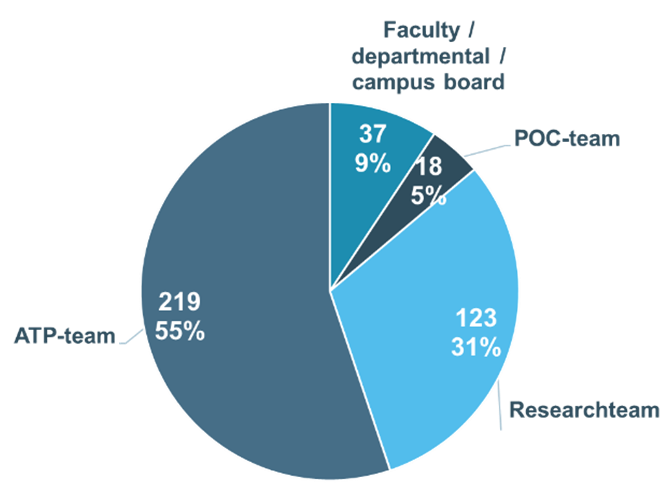We tested linear regression models to examine to what extent the average perceived leadership quality of both formal and peer leaders (across all roles) predicted the different outcomes.
The significance levels are set at * p < .05, ** p < .01, and *** p < .001.
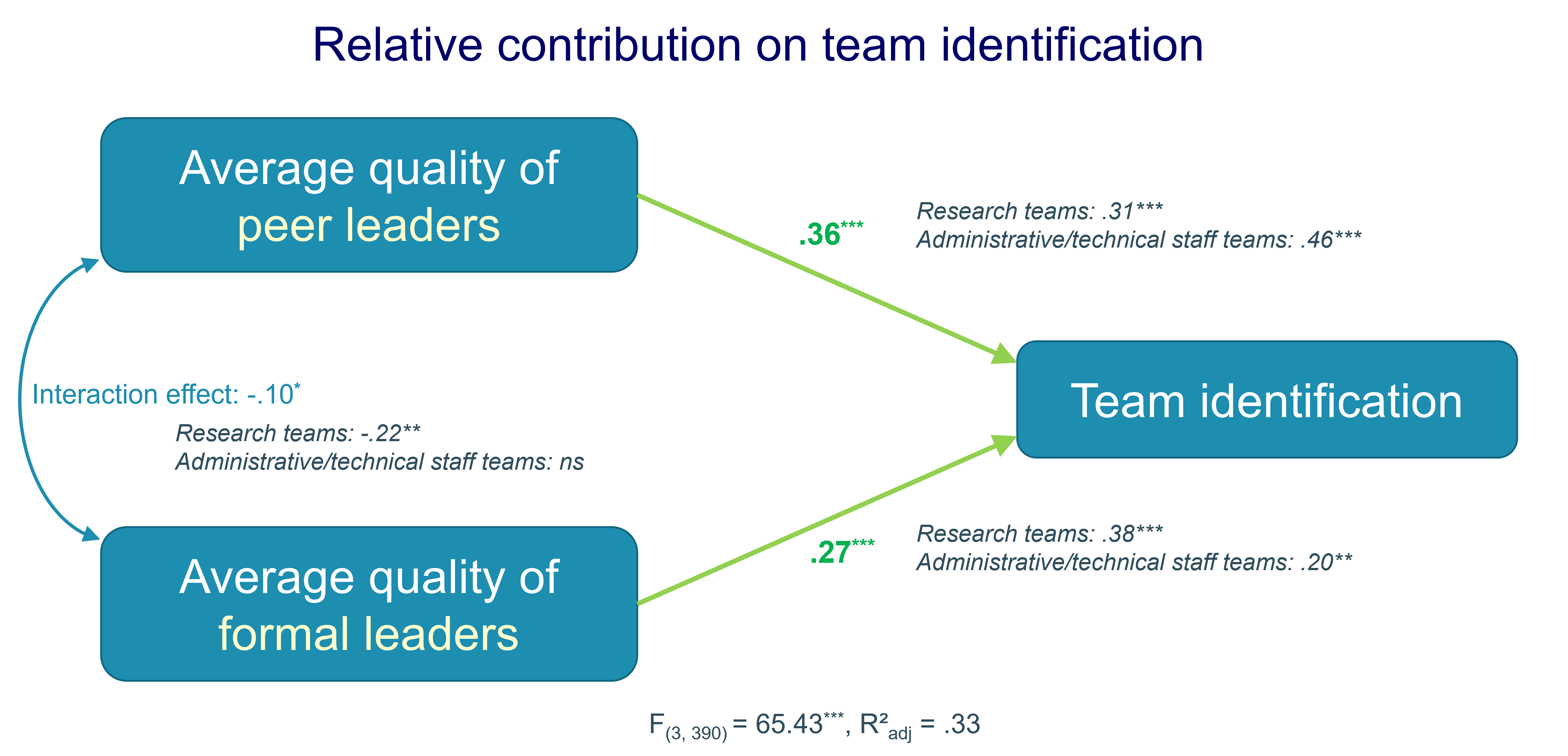
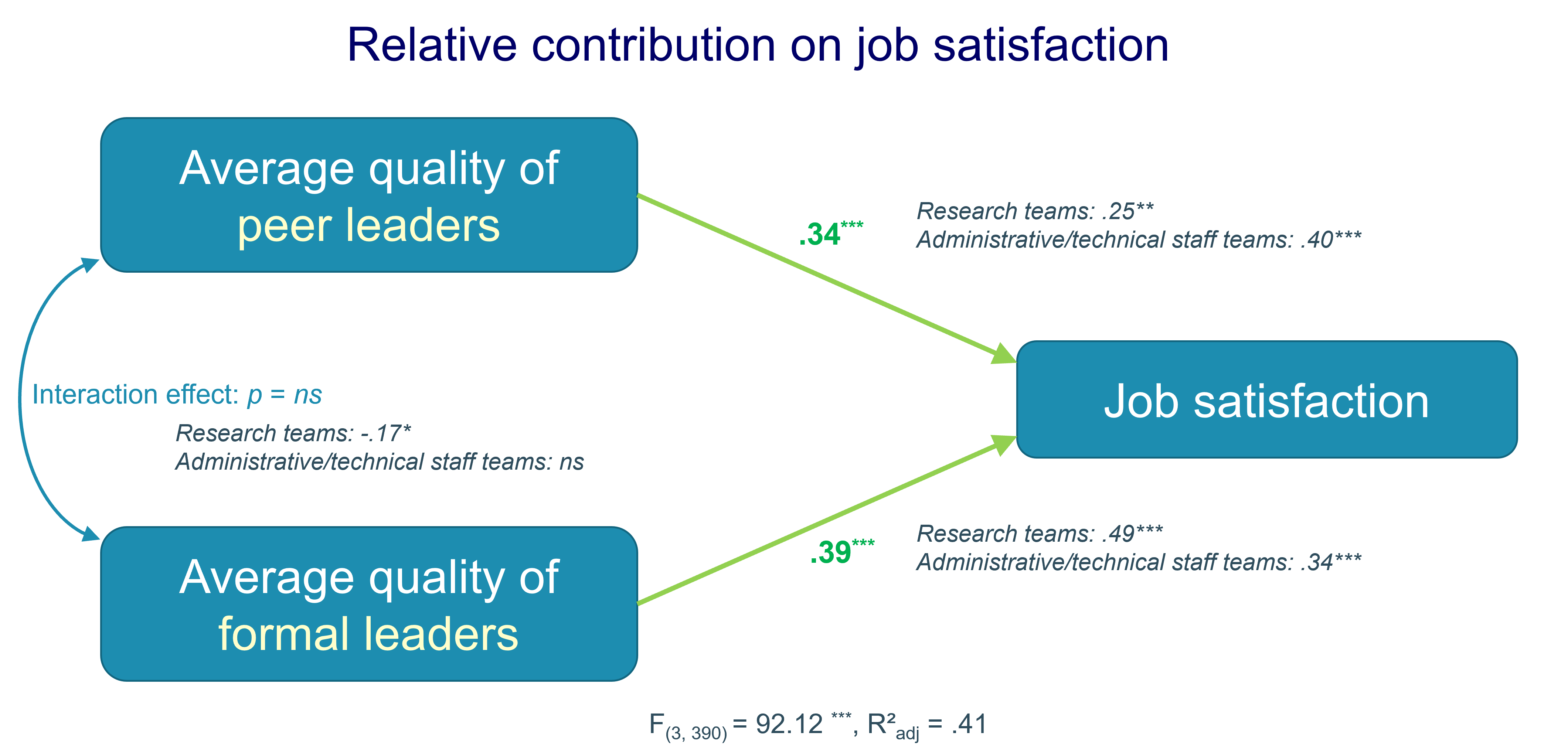
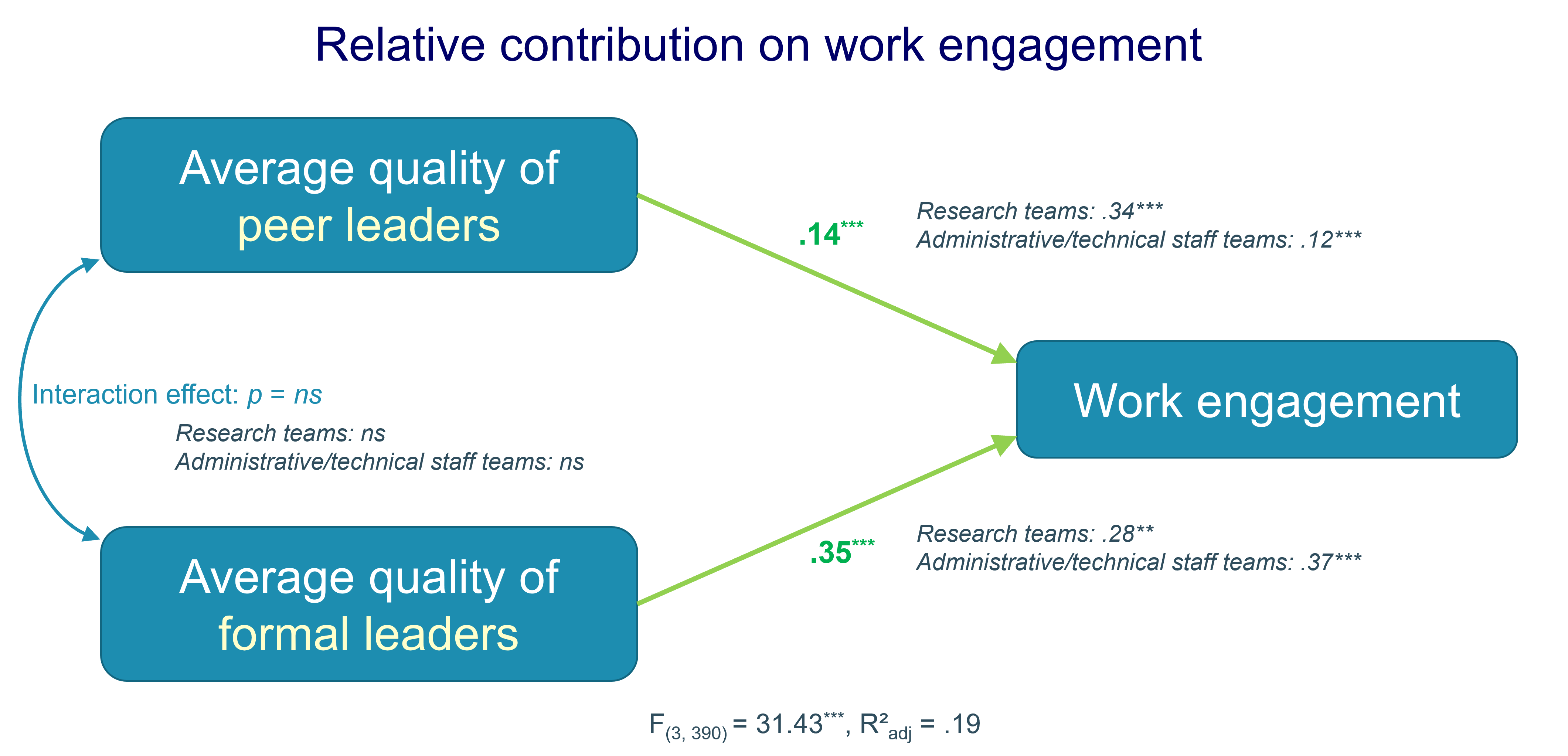
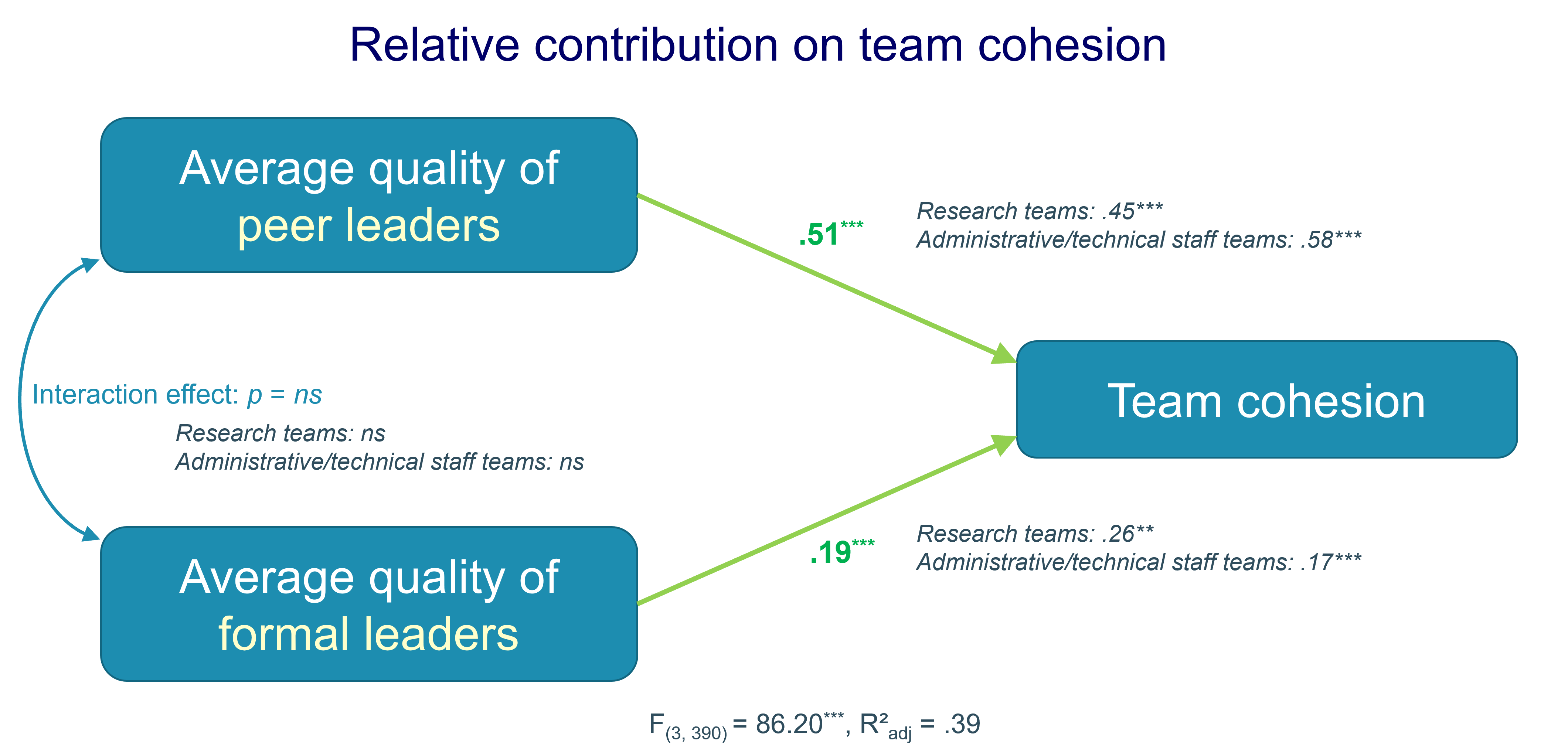
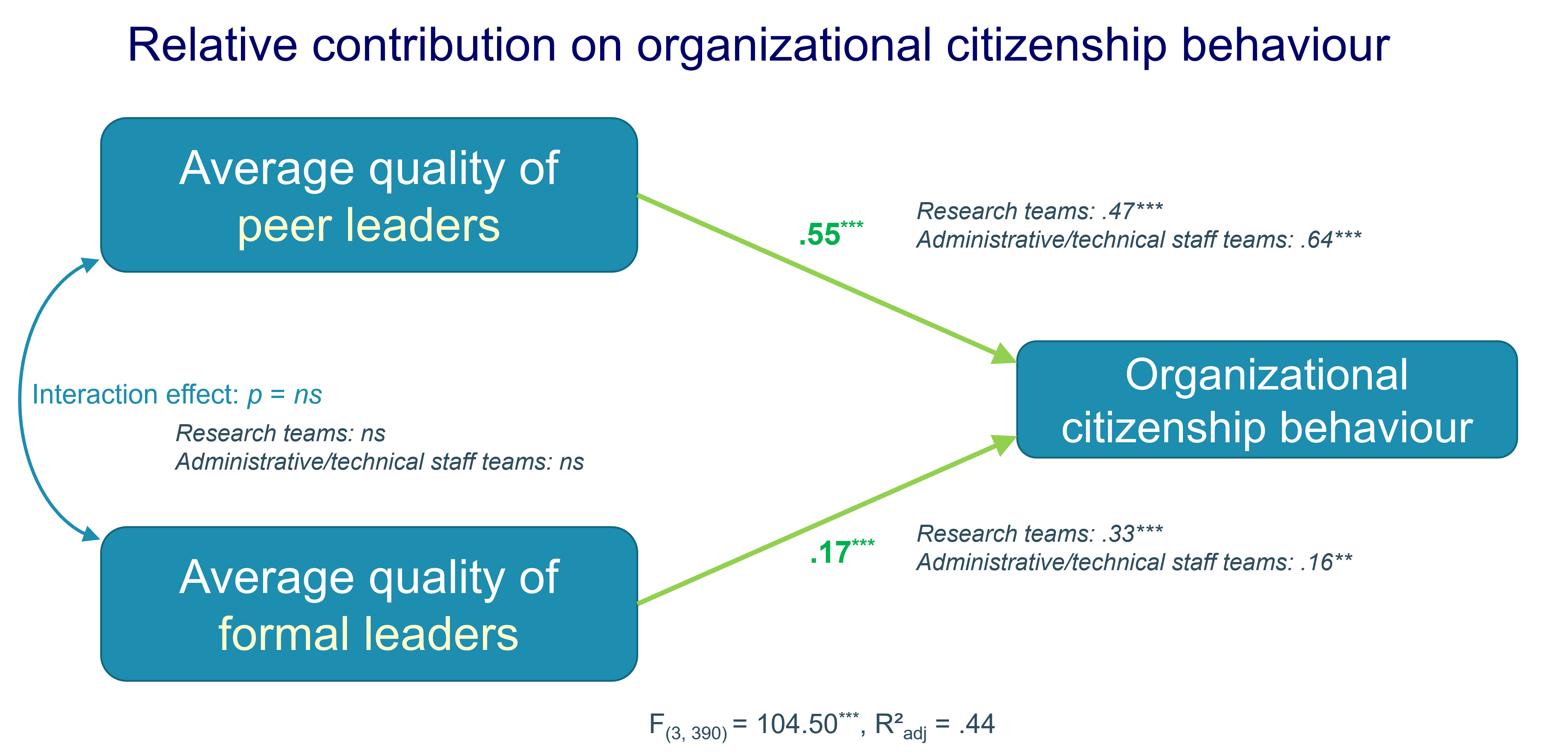
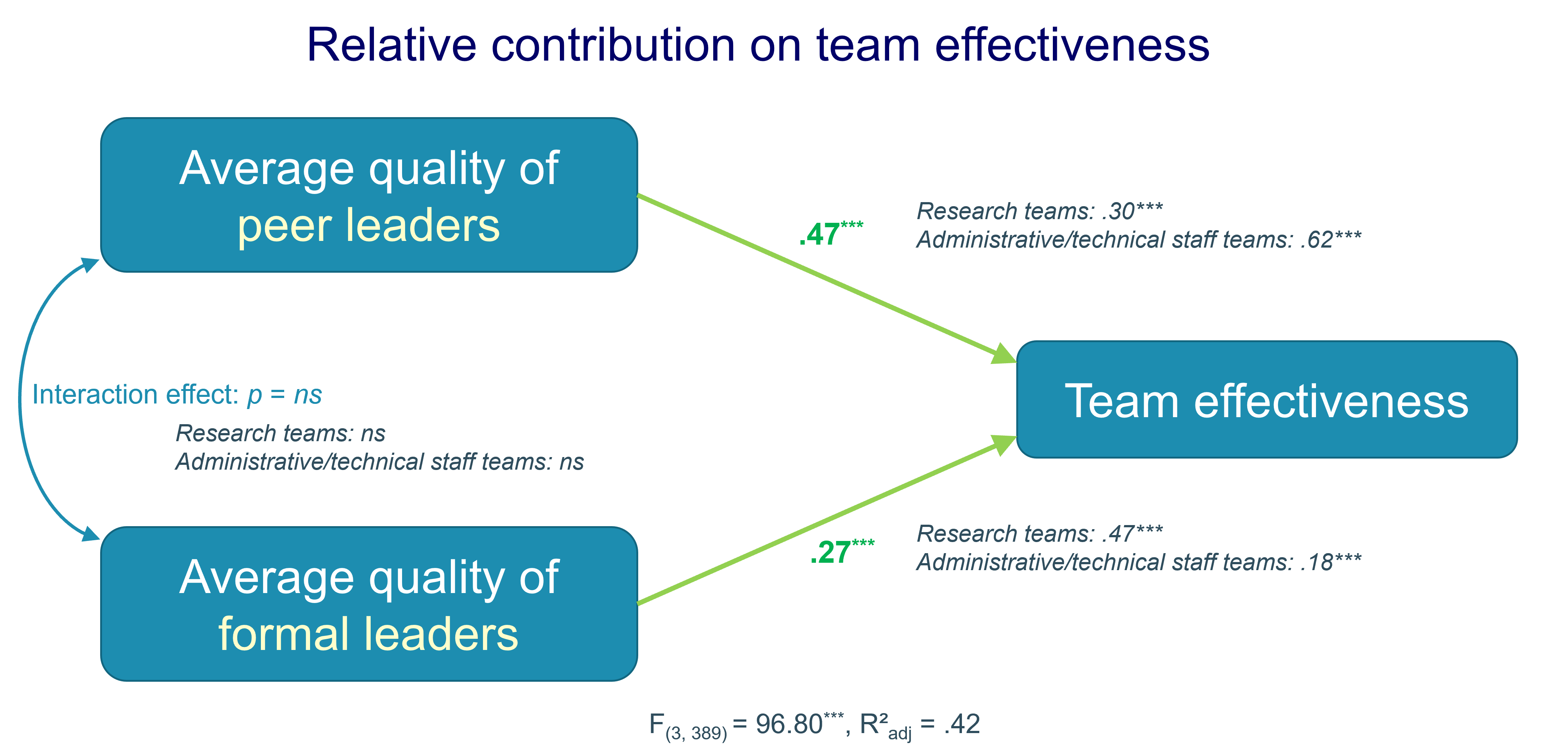
The linear regression models show that both formal leaders and peer leaders make unique and significant contributions to all outcomes. For team identification, team cohesion, and organizational citizenship behavior, peer leaders generally exert a stronger influence in both research teams and in administrative and technical staff teams—except for team identification, where leaders' impact is similar. With respect to work engagement, peer leaders play a larger role in research teams, whereas formal leaders contribute more in administrative and technical staff teams. The pattern is reversed for job satisfaction. When it comes to team effectiveness, peer leaders contribute more strongly than formal leaders in the overall sample, and especially in administrative and technical staff teams; however, in research teams, formal leaders have the greater impact.
Controlling these effects for moderators
In order to examine if the effects observed in the previous models were influenced by other factors, we investigated the moderating effects of the following variables:
- Age
- Gender
- Team size
- Team tenure
- The amount of face to face versus digital contact with the formal leader
- The amount of face to face versus digital contact with individual team members
- The amount of face to face versus digital contact with the entire team
To ensure an adequate sample size, we tested the potential moderation effects separately for formal leadership roles and peer leadership roles. This allowed us to include all participants who completed the questionnaire for either formal or peer leaders, rather than only a subset who responded to both sections.
Based on these analyses, we made the following conclusions:
- Neither the formal leadership roles nor the peer leadership roles lost their significance as direct predictors for any of the outcomes in the models that included each of the moderators.
- Gender, team tenure, team size, and the amount of face-to-face contact versus digital contact with either the formal leader or team members (both individuals or the entire team) did not significantly affect the impact of perceived leadership quality on any of the outcomes (i.e., team identification, job satisfaction, work engagement, team cohesion, organizational citizenship behaviour, or team effectiveness).
- Age showed one small negative interaction effect, indicating that for work engagement, the impact of perceived leadership quality of peer leaders decreases slightly as one's age increases (β = -.09). No other significant interaction effects were found for age.
Overall, we can conclude that the findings from the previously shown regression models were unaffected by the moderators mentioned above, with the exception that older individuals appeared to be a little less influenced by the leadership quality of their peers in terms of work engagement. However, no other age-related effects were found.

